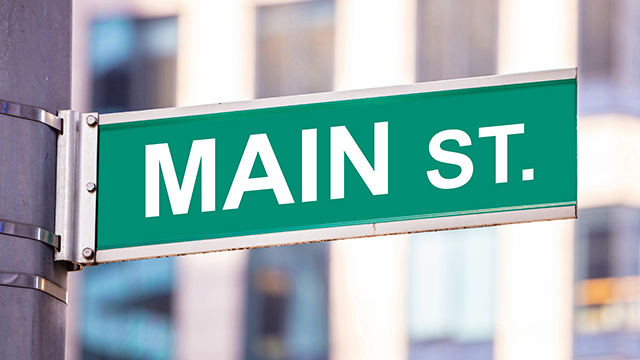Main Street Lending – Now Available for Nonprofit Organizations
By Joseph J. Kanjamala | August 12, 2020
As a part of the Coronavirus Aid, Relief and Economic Security (CARES) Act, the Federal Reserve created the Main Street Lending Program to provide a total of $600 billion in financing for small and medium-sized businesses including not-for-profit organizations. The program provides loans to eligible organizations — those that were financially sound before the COVID-19 crisis but now need financial help to run their operations smoothly. Nonprofit organizations were not included in this program in the original CARES Act. On July 17, 2020, the Federal Reserve Board modified the program to provide greater access to credit for nonprofit organizations and accordingly, two loan programs — namely, Nonprofit Organization New Loan Facility (NONLF) and Nonprofit Organization Expanded Loan Facility (NOELF) — were created for nonprofits.
The purpose of both NONLF and NOELF is to facilitate lending to nonprofits by eligible lenders and generally mirror those Main Street loan programs available to for-profits. NONLF is for nonprofits looking for a new loan, and NOELP is for nonprofits with an existing credit relationship, either a term loan or a line of credit, with an eligible lender. In a NOELF, the lender can increase or add an increment or tranche to the existing loan. To be eligible, the existing loan or line of credit must have been originated on or before June 15, 2020 and must have a remaining maturity period of 18 months. An eligible lender includes a U.S. bank, savings association, credit union and branch or subsidiary of a foreign bank. The loan program is administrated by the Federal Reserve Bank of Boston through a Special Purpose Vehicle (SPV). The lenders can sell 95% of the new loan under NONLF or the tranche under NOELF to the SPV at par value and retain the balance of 5% until maturity.
Who Is Eligible?
A U.S. nonprofit organization exempt from tax under Internal Revenue Code Section 501 (c)(3) or 501 (c)(19) with significant operations and most of its employees based in the United States are eligible to apply, provided that the organization:
- has been formed under the laws of the U.S. and has been in continuous operation since January 1, 2015;
- has a minimum of 10 and a maximum of 15,000 employees; the employee count for this purpose includes all full-time, part-time and seasonal employees and those employed by its affiliates;
- has annual revenue of less than $5 billion and an endowment of less than $3 billion;
- has total non-donation revenues equal to or greater than 60% of expenses for the period from 2017 through 2019; non-donation revenue is arrived by subtracting proceeds from fundraising events, federated campaigns, gifts, donor advised funds, etc. from total revenue; however, non-cash contributions, government grants, revenue from supporting organizations, grants from private foundations, etc. are not considered donations; expenses for this purpose excludes depreciation and amortization;
- has a ratio of adjusted 2019 earnings before interest, depreciation and amortization (EBIDA) to unrestricted 2019 operating revenue of 2% or greater;
- has a liquidity ratio of at least 60 days calculated by dividing unrestricted cash and investments over the previous year’s average daily expenses; and
- the ratio of unrestricted cash and investments to existing debt is 55% or greater.
Organizations that received loans under the Paycheck Protection Program (PPP) are also eligible to apply, provided they satisfy the eligibility criteria mentioned above. However, the portion of the outstanding PPP loan that has not been forgiven is counted as an outstanding debt for the purpose of calculating the 55% ratio mentioned above. The forgiveness available to PPP borrowers is not available for loans under this program.
Terms and Conditions
The eligible lenders are authorized to assess the financial condition of the borrower at the time of the application review. The minimum loan amount under the NOELF program is $10 million and the maximum is the lesser of the borrower’s average 2019 quarterly revenue or $300 million. The minimum loan amount for the NONLF program is $250,000 and the maximum is the lesser of $35 million or the borrower’s 2019 quarterly revenue. A loan under these programs cannot be subordinated to any other debt except a mortgage debt. The loans may be secured or unsecured. Personal guarantees are not required under the program, but the lender may request personal guarantees as a part of their underwriting process. Other terms and conditions are as follows:
- the loan has a maturity of five years;
- principal payments are deferred for two years and interest payments deferred for one year;
- 15% of the principal loan amount is amortized at the end of the third year, another 15% at the end of the fourth year, and the balance (70%) is a balloon payment at maturity;
- the interest rate is LIBOR (one or three months) + 3%, which is currently 3.25%; and
- there is no prepayment penalty.
The loan proceeds can only be used in furtherance of the nonprofit’s exempt purpose, such as to maintain operations and pay expenses. The proceeds cannot be used to refinance or accelerate an existing debt.
Fees
The lender on a NONLF program is required to pay the SPV a transaction fee calculated at the rate of 1% of the principal amount of the loan at the time of origination, which the lender can get reimbursed from the borrower. In addition, at the discretion of the lender, the borrower may be asked to pay a loan origination fee of up to 1% on the principal amount of the loan at the time of origination. In the case of the NOELF program, the transaction and origination fees are charged at the rate of .75%. The SPV is required to pay the lender .25% of the principal amount as a loan servicing fee. Lenders are not permitted to charge any additional fees, except de minimis fees such as appraisals, legal fees, etc.
Borrower Certifications and Covenants
The lender is required to obtain certain certifications and commitments from the borrower at the time of the loan origination, including:
- A commitment to refrain from repaying the principal or interest on any other debt, until the loan under the Main Street Lending Program is fully repaid. However, if the principal or interest payment on the other debt is mandatory and due under the loan agreement, then the borrower can pay.
- A commitment that the borrower will not seek to cancel or reduce a line of credit with any lenders, including the lender under the program.
- The borrower is also required to certify that at the time of the loan application and 90 days following the application, the borrower can pay its obligations and not expect to file for bankruptcy.
- In addition, the borrower should make a reasonable effort to retain its employees when the loan is outstanding.
Application Process
Nonprofit organizations interested in applying for the loan should contact the financial institution they work with. Most of the banks are participating in this program, and a full list is available on the Federal Reserve website. A nonprofit can apply with multiple lenders, with proper disclosure of all the applications it submitted. The program ends on December 31, 2020, unless the Federal Reserve and the Department of Treasury extend the program.
Conclusion
Although many nonprofit organizations are struggling from the impact of COVID-19, only a limited number of them applied for loans under the Main Street Lending Program. Most of the banks operating in the U.S. are eligible lenders, but many of them did not sign up initially to become eligible lenders and are not highly promoting the Main Street Lending Programs. The recent federal balance sheet shows approximately $95 million in outstanding Main Street loans. The lack of interest for this loan could be attributable to many of the stringent terms and conditions, such as the requirement that the applicant must be financially sound before the pandemic, the subordination clause, the limitation on the use of loan proceeds and certain financial ratios such as 60 days of cash on hand at the time of application, exclusion of donations from annual revenue, etc. To create more interest in the Main Street Lending Program, the Federal Reserve and the Treasury should consider relaxing some of the criteria.
Click here to continue to read Nonprofit & Government Times, August 2020.
About Joseph J. Kanjamala
Joseph J. Kanjamala, CPA, CGMA, is a Partner in the Nonprofit, Government & Healthcare Group at Marks Paneth LLP. His responsibilities in this role include designing audit strategies, supervising and training staff, liaising with clients, and providing oversight so that audits are conducted in a timely and cost-effective fashion. During his more than 20 years of public accounting experience, Mr. Kanjamala has developed deep skills in serving nonprofit organizations and has served numerous charitable organizations,... READ MORE +




